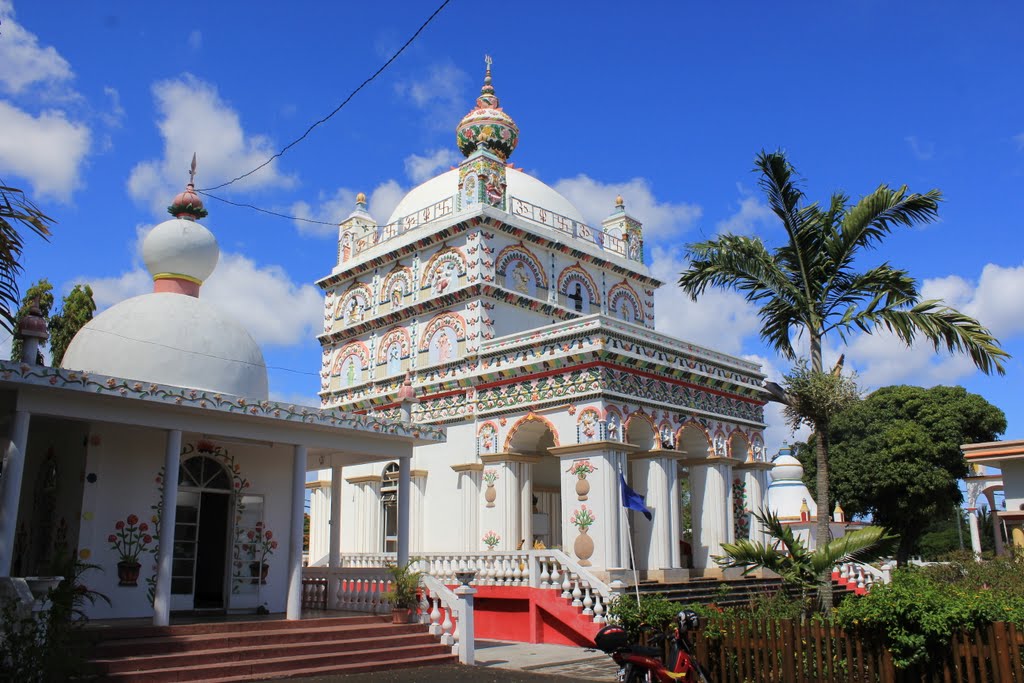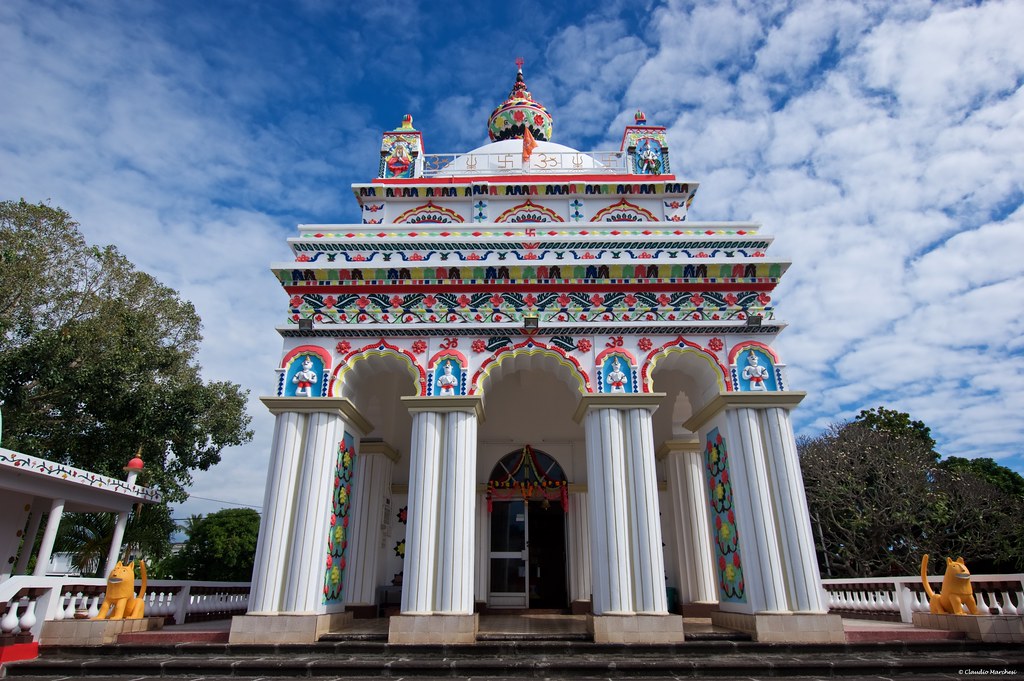
The 133-year-old Maheswarnath Shiv Mandir in Triolet
Established by the priest Pandit Sanjbunlall Ramsoondur in 1888, the Maheswarnath Shiv Mandir in Triolet is dedicated to Lord Shiva and is modeled on the Bengali architectural style of a five-flowered temple. The Mandir (Triolet Temple) combines the best of the temple building tradition – architecture, sculpture, painting and other related arts. Painted in white, embodied by colorful floral motifs, the Maheshwarnath Shiv Mandir contrasts beautifully with its white background and natural surroundings. Our ancestors testify through records that the first pilgrimage to Grand Bassin originated from the temple. This establishment was once much more than a temple, it was a refuge for Hindus laborers who were fleeing their masters and a center of learning.The site of this emblematic temple, spread over 4 acres of land, was once a sugar factory. Pandit Shri Sanjibonlall Ramsoondur, better known as Pandit Sanjibon, arrived in Mauritius in 1866 from Orissa. He came as a merchant. Endowed with great intelligence, he managed to acquire great wealth which enabled him to buy land and become a prominent landowner in Triolet. One such land he bought was the property that houses the Maheswarnath Shiv Mandir. He had acquired the land from Jules Langlois, the then proprietor of the Triolet sugar mill. The factory’s 90-foot high chimney was unintentionally demolished by him. And at that time, it was unlawful to damage historical monuments. For the sake of avoiding legal repercussions, he repaired it into a trident of a temple. The construction of the temple took place from 1888 to 1891 with the main craftsman being Mr. Goinsamy Maestry, the artisan who built the Jummah Masjid in Port Louis and the Sockalingum Meenatchee Ammen kovil in the capital. And so the ruins of the mill became a place of worship.
Temple’s Shivling consecration in 1895
The materials used for the construction of this temple were very particular because concrete was not mainly used at that time. Lime and sand were more common and these were brought from the village of Troux Aux Biches. The Shivling of the temple was laid in 1895 in front of a huge crowd of admirers.The water to be poured on the Shivling was brought from the Merven Lake of Solitude. When the temple was consecrated, Panditji sold the property to the Hindu Society which was then run by 26 members to take care of the establishment.I n the following years, other smaller temples were built in the same plot. In the courtyard of the Maheswarnath Shiv Mandir, you will find a temple dedicated to Vishwanath, the god of the universe (epithet of Shiva). The temple was consecrated in 1908. Facing this structure is a statue of Nandi (the sacred bull of the Hindu god Shiva). As you proceed, you will come across a temple dedicated to Jagannatha, (Lord of the world) under whom Lord Krishna is worshiped in Puri, Odisha (Orissa). A little further ahead you will find a temple dedicated to Kali. Not far away you will see a temple housing the nine forms of Maa Durga and next to it is the Ram Parivar temple. The Radha-Krishna temple is just next door as is the Laxmi Ma Mandir temple. While the Hanuman deity is on a high platform with a staircase leading to it. And in 1976, Shrimati Indira Gandhi, former Prime Minister of India had brought with her an idol of Lord Nataraj, a gift that had been given by the previous Health Minister of India, Dr. Karan Singh.
The first pilgrimage of Maha Shivratree
It was at the Maheswarnath Shiv Mandir, that the first procession for the Mahashivratri was undertaken in 1897 with only 10 people from Triolet, heading to Grand Bassin to collect the sacred water. The lake was then known as “Pari Talao”. In this way, every year, faithful to the tradition, Hindus equipped with their Kanwars leave their villages or cities to walk towards the sacred lake, Great Basin.
Currently, Triolet Temple is managed by 35 members with their president being Mr. Chand Toolsee. He describes how the Mandir celebrates the important festivals and prayers in the Hindu calendar. Activities are organized regularly. However, during the last few years, due to the Covid-19, limitations had to be imposed and unfortunately as the years go by, the structure of the temple is becoming more and more fragile.
Major renovation works have been made and more needs to be done to maintain the framework and authenticity of the temple, says the President.
But with the lack of funding and the covid-19 not making it any easier, it seems that the renovation of the temple will not happen soon.

